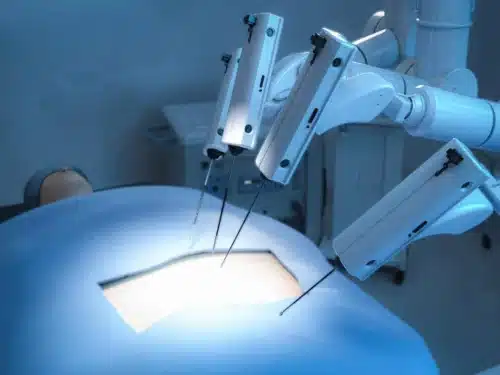A robot can now learn how to do surgeries by watching videos and might soon be able to do complicated surgeries independently, making surgeries safer and more precise.

Johns Hopkins and Stanford University researchers employed imitation learning, enabling a robot to learn surgical techniques from an extensive collection of video archives instead of requiring programming for each action. This method represents a considerable advancement toward autonomous robotic surgery, which could decrease medical errors and enhance accuracy in surgical procedures.
Robot Training
A robot has learned to perform surgery by observing videos of surgeons, reaching a skill level comparable to that of human doctors. This advancement in imitation learning for surgical robots eliminates the need to program each movement in a medical procedure. Now, robots can learn through observation, moving robotic surgery toward complete autonomy, where robots may eventually conduct complex surgeries without human assistance.
Enhanced Learning Through Video
The model integrates imitation learning with the machine learning architecture behind ChatGPT. Unlike ChatGPT, which processes language, this robotic model operates on kinematics—a mathematical language that defines robotic motion in terms of precise angles and movements. The researchers trained their model using hundreds of videos captured from wrist cameras on the arms of da Vinci robots during surgeries. Recorded by surgeons worldwide for post-operative analysis and later archived, these videos provide a substantial data archive for robots to learn from, with nearly 7,000 da Vinci robots globally and over 50,000 surgeons trained on the system.
Achieving Precision and Autonomy
The team trained the robot to execute three tasks: needle manipulation, lifting body tissue, and suturing. In each scenario, the robot used the team’s model to perform these surgical procedures with the same skill level as human doctors.
Future Prospects for Medical Robotics
The researchers noted that their model could swiftly train a robot to perform any surgical procedure. They are currently applying imitation learning to teach robots not only small surgical tasks but also complete surgeries. Previously, programming a robot to perform even a basic surgical element involved manually coding every step, which could take a decade just to model suturing for one type of surgery.






